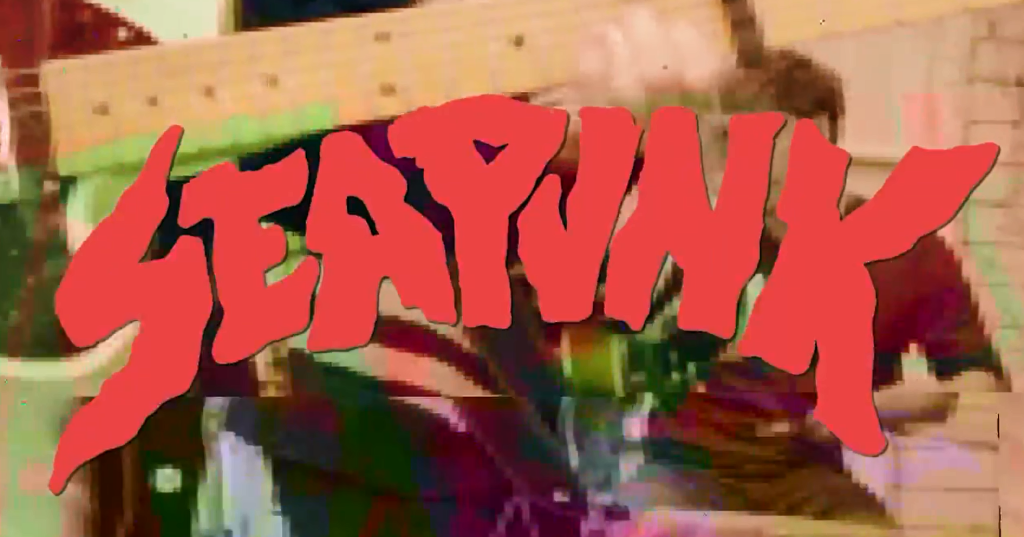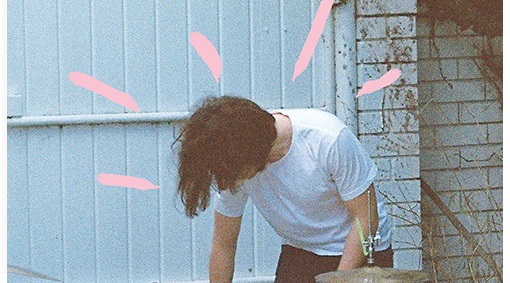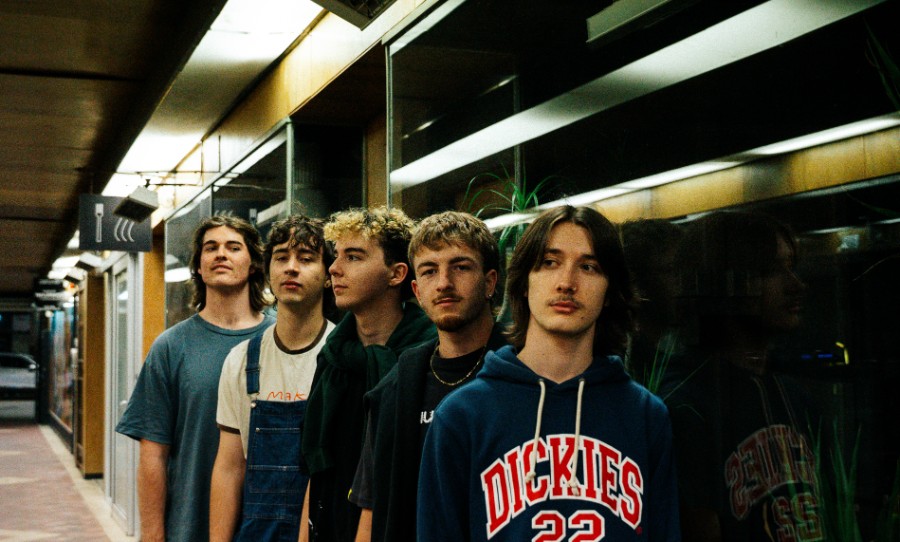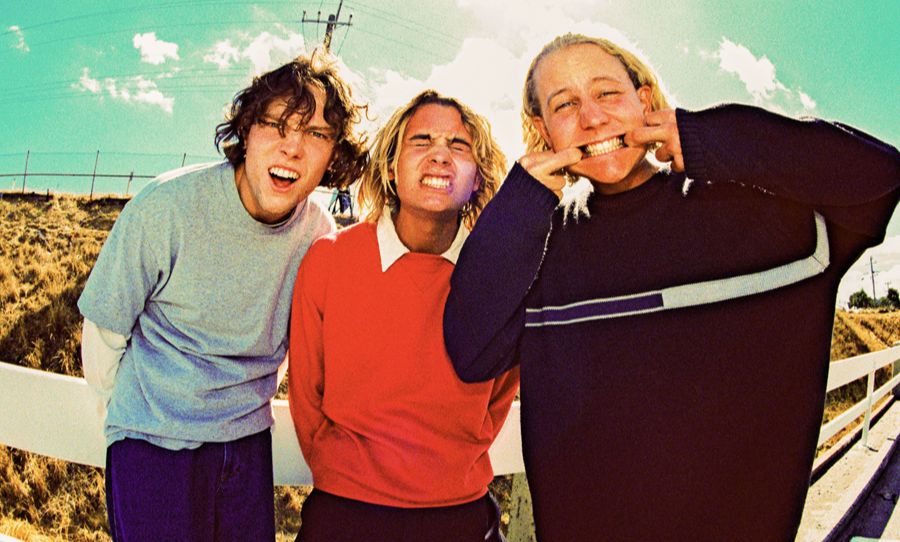A wise band once summarised the duality of summertime pop music by listing the first track on their album as “If Your Song Title Has The Word Beach In It Im Not Listening To It”, only to name the second track on the album “Get To The Beach!”. Here in 2014, the influence of surf rock, sunshine psych and to some extent lo-fi have become ubiquitous, with beachy influences in guitar music now something to be expected from any stock guitar band. It’s also arguable that this generation’s reincarnation of surf-rock-punk-lo-fi reached it’s zenith in the late 00’s, with bands like Surfer Blood and Wavves picking and packing the best from Dick Dale and Pixies alike to make (in my opinion) two of the best guitar albums of the past decade. 
Happy is excited to premiere the new vid from Perth punks Braves for their EP leading single Seapunk, which explores the idea of surfing a different, more pixelated type of wave…
Interestingly, the latest single from Braves similarly points out some of the more philosophical conflicts in making music for the summertime, more particularly addressing shoreside living – the dual notion of ‘the beach’ and the adapted terminology of “surfing” itself. Seapunk explores both concepts of traditional surf culture, and the rather disconnected online oddity that was/is Seapunk. The movement, for those who aren’t hyperactive, hypochondriac, hyperfeminist teenage girls on Tumblr, was a vaguely musical, vaguely artistic, vaguely cultural circlejerk associated with a nostalgia for dial up internet. That’s right, a generation that doesn’t remember having to disconnect their landline to access their favourite IRC client are fawning over the nostalgia of the 10 minute long Windows 3.1 bootup times. Kids these days, right?
The Braves track that we’re premiering today – Seapunk – is hardly a song reminiscent of Seapunk music. It’s described by Wikipedia as a collection of various electronic genres that were floating around the pop charts around 2011-2012 – mostly the sub-bass of Trap and the vapidity of 90’s house and R&B, and described by me as me as Chillwave, except produced and performed by shit celebrities. While it takes visual cues from the undersea adventures of Disney et al., it is concerned mostly with surfing the net rather than surfing real physical waves, and it is this dual meaning that the Braves song Seapunk explores.
The song is no doubt influenced by everything that has come between Braves and The Trashmen, but is still undeniably classifiable as a surf tune, and you’d be forgiven for taking that aesthetic on face value (you pleb). What’s interesting is the fact that this Braves song is particularly about a fear of surfing, and a fear of open water in general – a distinctly unsurfy point of view (or at least not the view that surf musicians want you to think they have). In fact a surprising number of the tracks on the Seapunk EP express this concern, especially track five, aptly titled I Don’t Surf (he just plays guitar),
This, alongside the name of the track and the accompanying video, leads me to believe that the type of surf the band refer to is of the online, browser based variety. Indeed, the song is about a fear of what lies behind the screen, hidden in depths of HTML code and open source software. The opening lines “There’s nothing but monsters at the bottom of the sea; There’s nothing in the waves that I’m convinced I need” seems to equally refer to the depths of the Pacific or the depths of the internet – which we know is full of monsters and has never really contained anything crucially important that one might need. Indeed, all his friends seem to want to “go to the beach“, but our narrator/singer assures us that he’ll “stay in the sun and be fine on [his] own” – a healthy distrust for the concerns and actions of the digitally addicted.
So is Seapunk a warning against getting sucked into the depths of procrastinating your life away on the internet, against memeing too hard and not coming back to reality? Who knows, and to be honest, it’s not high on the list of academic debates in cybercultural theory. Let’s turn our attention now to the video, which after all we are premiering and probably deserves some attention…
A girl, the very model of a modern major Seapunk, is drawn away from her life of dying her hair and watching 144p videos on her iMac G3 by her landlubbing boyfriend and dragged to a party – IRL, which she’s totally #blergh about. Contrast her inner, less mentally stable life, with the surrounding atmosphere of the party: the extreme close ups on handsome men advertising a variety of local and imported beverages, surfboards being placed carefreee against whitewashed walls, and inflatable rubber tubing being thrown into domestically chlorinated water all show the Seapunk out of place in the traditional social environment of the stereotypical youth.
As our blue haired hero (alas not of the Groening variety) sits in the shade, she continues to nonchalantly commit mass murder in a fashion and on a scale that would give Jim Jones a semi. As she revels in the glory of slaughter, she escapes to a fantasy ‘web art’ world full of crudely rendered 3D images and archaic screensaveresque sprites. Fleeing the scene of the crime, she winds up at the beach – the actual physical beach, symbolically travelling full circle and escaping Seapunk’s demonic aesthetic.
Braves’ Seapunk explores the internal, complex identity of the Seapunk to a greater extent than any song adhering to the expected electronic aesthetic, purely because it is detached from Seapunk’s glorification. If a Seapunk song about surfing that was titled Seapunk, it would hardly be worth mentioning, let alone writing 1000 words on. On it’s own, Seapunk is a great 00’s – 10’s indie song, and it’s refrain “Go to the beach!” will resonate with generations of youth to come. Yet the real message of the song, reinforced by the premiered video above, is all the more powerful through its association with this archaic form of guitar pop – the message being stop all the downloading.
Lo-Fi Surf and Seapunk do have some things in common – both glorify a distinct lack of political ethos, and the two hold a collective desire for C-grade narcotics legalization – yet the simple act of living free and easy and the dream of ‘dropping out’ could never be reconciled with Seapunk. This is the brilliance of Seapunk as it captures a pertinent fear of the internet and it’s weirdos, and I’ll be damned if it hasn’t brought up traumatic memories of my Runescape girlfriend, all the while being an ace song.
You can catch Braves at Perth’s Bakery on Saturday the 25th, alongside Sidewalk Diamonds, The Wine Dark Sea, Villain and Elli Schoen for the Bakery’s Box Social #4. The Seapunk EP is available now for however much money you can spare on their Bandcamp.
FIND OUT MORE ON



